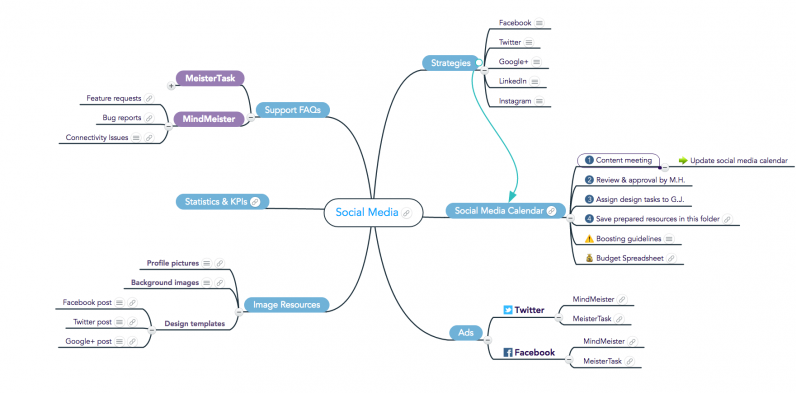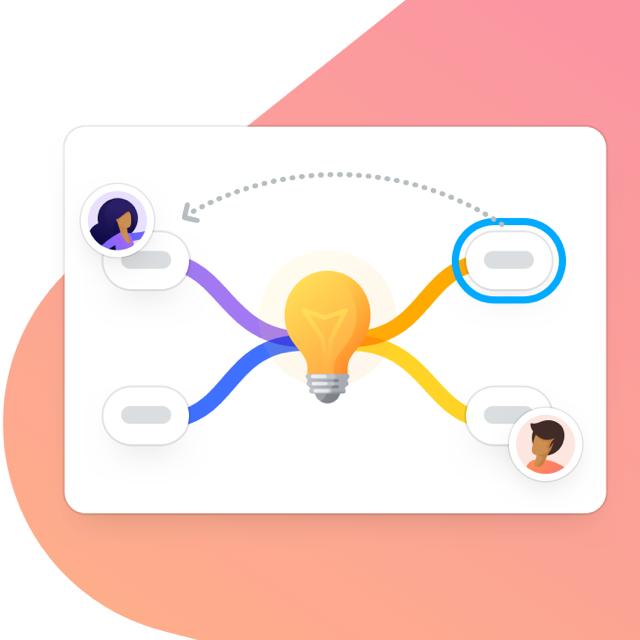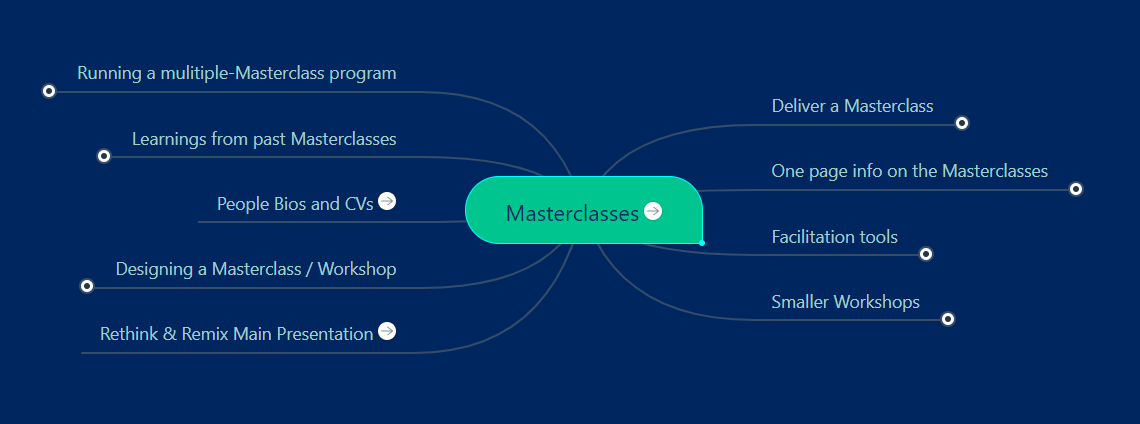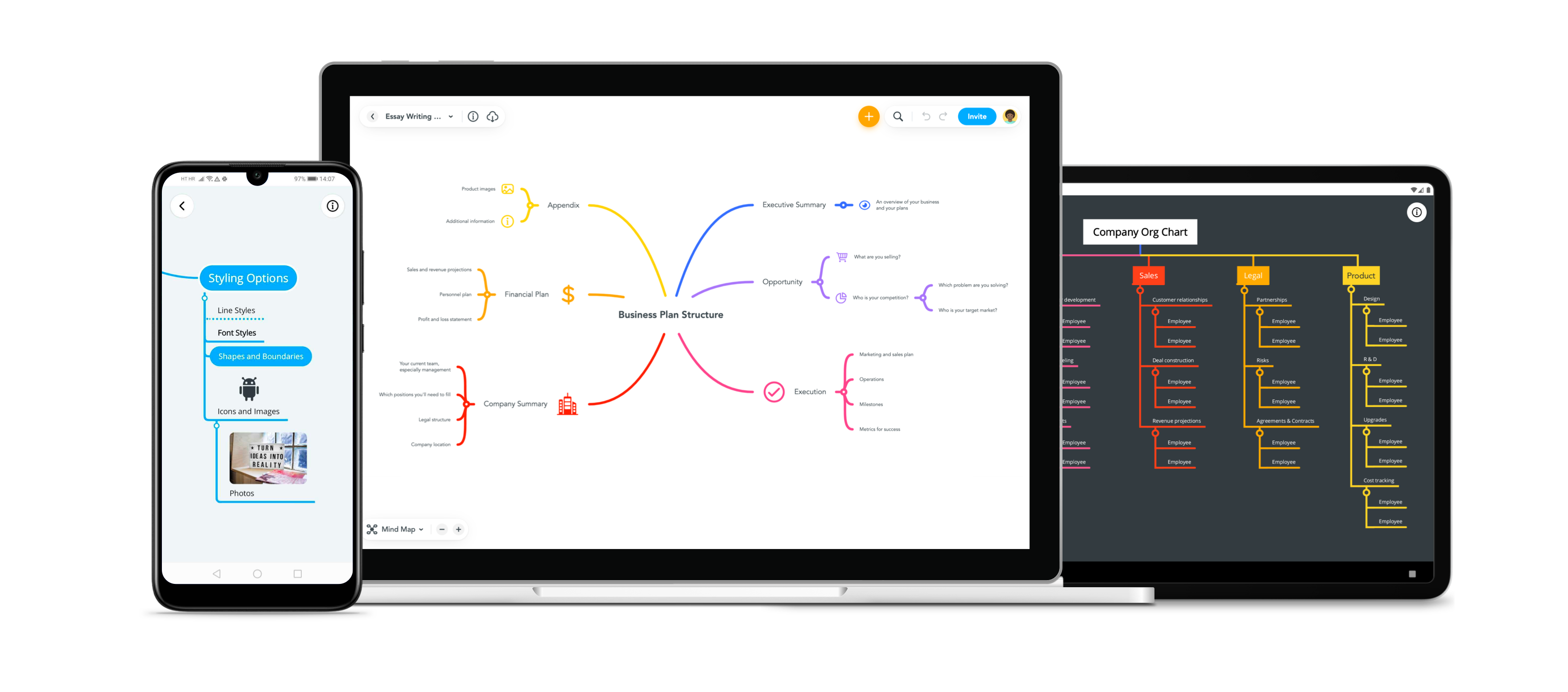A knowledge map is a powerful tool for communities and organizations to capture and share their most valuable asset: intellectual capital.
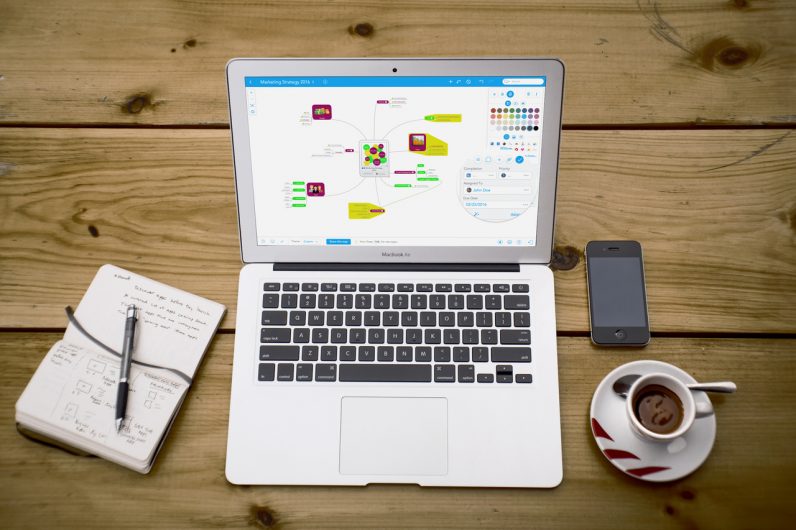
In the first article of this knowledge mapping series, I provided an introduction to knowledge management—its benefits and best practices. In this article, I will share why and how to build a knowledge map, plus some concepts to consider when doing so.
Table of Contents:
- What is a Knowledge Map?
- What Are the Benefits of Knowledge Mapping?
- How to Build a Knowledge Map
- Knowledge Mapping Best Practices
- An Everyday Example of Finding Knowledge Using a Knowledge Map
What is a Knowledge Map?
A knowledge map is a visual, like the example above, that shows where knowledge can be found within a company or organization. It includes knowledge rather than information, and that knowledge is accessed rather than searched for.
Here’s some information explaining what those concepts mean.
Knowledge vs. information
The key to building a good knowledge map is to avoid unnecessary noise, and the best way to avoid noise is to have a clear definition of what qualifies as a knowledge asset and what does not.
I like this definition from Davenport and Prusak:
Knowledge is a high-value form of information that is ready to apply to decisions and actions, [and that] knowledge derives from information as information derives from data.
This is extremely important, as I’ve often seen knowledge-sharing platforms suffering from an excess of information. This is damaging to the knowledge mapping initiative. Too much information becomes noise, and noise prevents people from accessing the most important content.
Here is where the “knowledge asset” concept becomes important.
For me, knowledge assets are minimum common denominators of knowledge—an atom if you like. They are actionable, productive units. I normally expect over 90% of knowledge assets to be produced as part of the normal team workflow.
I like assets to be small and actionable. Those atoms are then added to the knowledge map for users to navigate and grab at will so they become the building material of their projects.
Do not search for knowledge, access it
In every meeting and workshop about knowledge management, I get the following question: “Shouldn’t we have a search field?”
We are so used to searching for information that it comes as a surprise when searching for knowledge is discouraged. But knowledge should be accessed rather than searched for.
When we search for knowledge—and if we are lucky—the best thing that can happen is that we find what we’re looking for. When we access knowledge by navigating the knowledge map, we discover things we did not know existed.
We also gain a quick understanding of what we know as a group, what we have available to us, and what we would like to have available to us but do not yet possess.
Many of us have experienced varying levels of frustration when we complete a search in a database. Often the computer returns lists of 20 items or more with vaguely similar titles, forcing us to open file after file. I can assure you that searching is not faster than accessing.
What Are the Benefits of Knowledge Mapping?
Knowledge mapping helps organizations curate an experience for their employees/members when accessing their collective intelligence. The intellectual capital of the company can be quickly accessed by organizing the knowledge assets in a knowledge map.
Knowledge maps are extremely intuitive, and they provide great platforms to showcase knowledge assets. Members of the team can navigate the different branches of the map, leading them to groups of assets and new maps. And most assets can be reached following different paths, as different people follow different thought processes.
How to Build a Knowledge Map
The image below belongs to the knowledge map for the preparation of the annual OuiShare Festival held in Barcelona.
OuiShare is a think tank that focuses on collaborative consumption and the sharing economy. It is a community of 3,000 who get together around projects.
In our case study, we’re focusing on the OuiShare Fest BCN. OuiShare Fest is an annual three-day conference for around 700 attendees, held in Barcelona. Organizing the festival involves around 30 people working at different degrees of intensity over a few months.
The work is divided into a series of departments, but for this example, we’ll focus on the work of the Sponsors team. The Sponsors team is made up of four members, and only one of us was involved in the preparation of last year’s conference.
Already here we identify a key element for our knowledge management initiative: institutional memory. When we start capturing knowledge assets, we should pay special attention to doing it in such a way that it will be easy to find and reuse by next year’s Sponsors team.
With this case study in mind, here is our step-by-step guide for creating a knowledge map for both planning and long-term knowledge acquisition purposes.
Step 1. Identify your knowledge map topic
During the team’s first meeting, we would go ahead and open a brand new mind map within our knowledge-mapping tool of choice: MindMeister. We name it “Sponsors.” This will be the domain for all of the knowledge associated with dealing with sponsors, and we expect the other teams to do the same with their domains.
For the time being, we will focus on only working on our map, and at a later stage, we will start connecting this knowledge with other maps.
Step 2. Prepare your first assets
You can begin adding assets to your mind map before you’ve even started a project.
In our first meeting on gathering sponsors, for example, we could already define some of the things that we expect we’d be doing soon.
We can imagine that at some point we’ll be delivering a presentation to the potential sponsors. The presentation will explain what OuiShare is, what the conference is about, and why they should partner with us.
For this, we could start by adding a topic to the map and calling it “First Presentation to Sponsors.” This is our first knowledge asset.
We can always change this name in the future, but for now, this serves as a reminder for us to prepare for these inevitable presentations for sponsors.
Let’s now find a few more assets that we predict we’ll be needing:
- Assuming that the sponsor finds our idea interesting, we will be asked to submit a proposal. In this, we’ll describe in detail the value we offer and the amount of money we’d be asking for.
- If the sponsor likes our proposal, we will then have to have a contract, or an agreement, between the parties.
And once the agreement is in place, we will then start delivering that value to the sponsors, whatever that is. For the time being, we will call that asset “Activities with the Sponsors.”
Step 3. Capture the first knowledge asset
We have a list of sponsors from the previous edition, plus a list of companies we have shortlisted but have not met yet.
The first thing we do is draft the email to sponsors. In this email, we introduce ourselves and propose a meeting to tell them about the festival and opportunities available for potential sponsors. So this is the first knowledge asset we’ve actually produced: the introductory email.
This is an asset we had not originally anticipated in the map but that we now believe is worth including. As different people on the team will be reaching out to potential sponsors—including the teams of future editions—it’s worth capturing and sharing.
Note that we are not producing knowledge assets for the sake of producing them. We are doing our normal daily work, and we capture those assets as they become available.
We, therefore, go to the map and choose where to add the asset. As we believe it fits with the group of activities related to “Approaching Sponsors,” we decide to rearrange our topics slightly.
As you can see in the below image, we have created a new branch called “Approaching Sponsors.” We’ve also moved the “Introductory Email” and the “First Presentation to Sponsors” to inside that topic. This example shows how versatile mind mapping can be when it comes to rearranging knowledge.
Step 4. Attach knowledge via documents or Google Docs
Now that we have a place for the “Introductory Email,” we only have to save a copy of the template email in the “OuiShare Knowledge Map” folder. If using Google Docs, simply change the sharing settings so that your relevant team members can collaborate and add their suggestions.
Once you have this shareable link, simply copy and paste the link into the relevant topic within your mind map. This can be done via the URL feature in the sidebar, as highlighted below.
Step 5. If needed, add your asset to other locations
Some assets do not belong only in one domain. For instance, when the time came to prepare the first presentation, one key asset we used was the “General OuiShare Fest BCN” presentation, prepared by the general coordinator.
By using the general presentation as the basis for our work, we not only save time, but we also ensure consistency throughout the entire team. Yet again, we adapted the knowledge map to reflect this:
This asset, “General Presentation,” is the perfect example of an asset that is present in many different domains, not only in “Sponsors.” This is extremely valuable since this is the best way to make sure that everybody in the team has the latest version of it.
Any time you capture an asset, spend a couple of minutes thinking in which other areas of the maps it should be present, too.
Step 6. Connect your different domains
As we discussed in our introduction to knowledge management, mind maps allow us to create an ontological navigation of the different knowledge domains.
In our example, there are a couple of designers working on the branding and design of the conference. They too develop knowledge maps to capture useful knowledge, and this “Design Resources” knowledge map is used across the entire team.
This is an extremely valuable domain, as we’re all accountable for producing material to send out to sponsors, speakers, the press, etc. For this reason, we (the Sponsors team) have added a topic on our knowledge map that leads directly to the “Design Resources” mind map.
Step 7. Make your knowledge available remotely
At OuiShare, we work entirely via the cloud for projects, communications, governance, and sharing knowledge.
For this reason, MindMeister is the best-suited mind mapping platform to capture and share our collective knowledge.
MindMeister is entirely cloud-based and geared up for collaboration. The administrator has set up the whole team on the MindMeister team/members environment. We can, therefore, access the shared knowledge whether we’re in the office or working remotely.
We use G Suite for our project management and file storage, again available via the cloud. For this, we’ve created a dedicated folder called “OuiShare Knowledge Map” containing all knowledge assets. The files are then shared in their respective mind maps via the shareable links (as shown above).
Since we’ll be sharing the knowledge maps with other members of the organization and external users, we provide the relevant individuals with permission to edit. This is done via the sharing settings on the MindMeister lower toolbar. Everyone will then receive an email alerting them and including a link to access and edit the mind map.
Knowledge Mapping Best Practices
Here are a couple of best practices to keep in mind when creating your knowledge map.
Organize your knowledge assets around knowledge domains
There are hundreds of knowledge assets in every community and every organization. The first piece of advice when building the knowledge map for your organization is to not try and capture all of your knowledge assets into one single mind map.
When you and your colleagues start creating your collective knowledge, you should be thinking of it as domains of knowledge. You can then dedicate one mind map to each of these domains.
A domain is just a group of assets that share a particular area. It’s important to note that one given asset could be present in a number of domains. This is a key characteristic of an ontology when compared to a taxonomy.
In the OuiShare example above, Sponsors has its own dedicated map. Other domains include “Branding,” “Production,” “Programme,” and “Volunteers.”
Different members of the organization will specialize in one or two domains. These team members will develop a feeling of ownership over these domains, which is more important than it sounds since company culture is the main obstacle for any knowledge management initiative.
Build your knowledge map so anyone can use it
Keep in mind that anyone in your organization may come to your domain’s knowledge map in search of useful and actionable information. While you create the mind map, try to create an experience for those visitors.
I strongly recommend that if you start getting a long list of topics, consider grouping them as subtopics. We often feel more comfortable with groups of no more than six or seven elements.
An Everyday Example of Finding Knowledge Using a Knowledge Map
Now that I’ve shown you how to create a knowledge map with MindMeister, I want to share an everyday example of how using a knowledge map for knowledge curation increases the quality of our work and saves us a lot of time.
My colleague Luis from Ouishare in Madrid had a meeting with TeamLabs, an organization that is revolutionizing higher education. We have been friends with TeamLabs for quite a while, doing things here and there, but we still haven’t done proper work together.
That day, Luis was exploring how we could collaborate. The meeting went well and they agreed on the next steps.
In that meeting, the client thought that Ouishare could host a series of workshops for their students on topics about, roughly speaking, the future of organizations. Luis agreed to submit the following materials:
- Specific topics for the workshops
- What are the benefits for the students?
- How do our workshops relate to TeamLabs’ philosophy?
- Relevant experience and testimonials
Luis needed to put together one excellent PDF with those bits and pieces and ideally submit it in less than 24 hours.
80% of the work was already done
Some may disagree with me here, but I can’t remember any task or project where 80% of the work hadn’t already been done before. I normally find that my work consists of combining available assets, cleanly and quickly, so I can dedicate 80% of my time to that 20% of the work that makes a difference.
In this example, Luis needs to focus on the question of “How do our workshops relate to TeamLabs philosophy?” This is the most valuable question for our potential client.
Luis needs to look into the details of their courses and make sure that what we propose makes sense and adds value. Everything else (the topics, references, and benefits) are secondary and should be put together quickly.
The diagram above tries to be a cake. While needed, of course, the body of the cake is not as valuable as the icing. We manage knowledge so that we spend most of our effort and time on the icing—whatever truly provides value.
Finding the pieces to build the cake using our knowledge map
We capture and share our knowledge with MindMeister and share it with everybody, fully open source. You can access it yourself here.
Navigating the knowledge map, Luis reaches the domain of “Masterclasses.” In there, he finds the one-pagers that describe the different workshops, something that he was specifically looking for.
Incidentally, he also realizes there is an area for “People Bios and CVs” and thinks this could also be useful to show the client the type of facilitators that could provide the workshops. Showing our mix of people is a good way to show how we fit with their program (the icing on the cake).
In the documentation for each workshop, there is a section listing the benefits for the attendees. Great! That covers the second part.
Luis finds a basic presentation that makes sense for this opportunity, where he also finds the testimonials. Incidentally, he discovers the work that our colleague in Austria did for a design university in Switzerland. I can’t stress enough how important these types of connections are!
By navigating the knowledge maps, Luis was able to:
- Put together 80% of the document in less than 30 minutes.
- Discover assets he did not know existed that will help him with the icing on the cake.
- Discover someone doing something really cool.
- Invest the following two hours creating something that made a lot of sense for the client’s needs.
Get Started Capturing Your Knowledge with a Knowledge Map
By now, you know what a knowledge map is, why it’s important, how it can be used by people in your organization every day to save time, and how to build a knowledge map. To recap, the steps are:
- Identify your knowledge map topic.
- Identify your first assets in the map (even if you don’t have them yet).
- Capture the knowledge assets as they become available.
- Attach those assets to the map.
- Copy the assets wherever you see fit.
- Connect your different domains.
- Make your knowledge available remotely.
The most important task of all is to maintain awareness. In our daily work, we are continuously generating material that is useful and worth capturing. If your team captures and shares those assets as they’re created, capturing collective knowledge will become a great deal easier.
Originally published in November 2016, this post has been updated to consolidate two posts into one and to add a new case study highlighting the benefits of using a knowledge map to find information quickly and easily.

